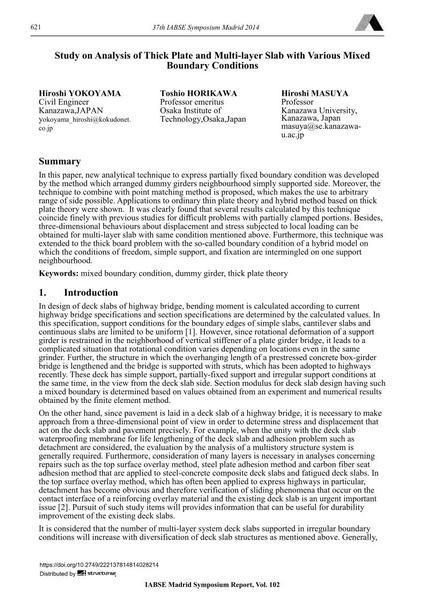Study on Analysis of Thick Plate and Multi-layer Slab with Various Mixed Boundary Conditions

|
|
|||||||||||
Bibliografische Angaben
| Autor(en): |
Hiroshi Yokoyama
Toshio Horikawa Hiroshi Masuya |
||||
|---|---|---|---|---|---|
| Medium: | Tagungsbeitrag | ||||
| Sprache(n): | Englisch | ||||
| Tagung: | IABSE Symposium: Engineering for Progress, Nature and People, Madrid, Spain, 3-5 September 2014 | ||||
| Veröffentlicht in: | IABSE Symposium Madrid 2014 | ||||
|
|||||
| Seite(n): | 621-628 | ||||
| Anzahl der Seiten (im PDF): | 8 | ||||
| Jahr: | 2014 | ||||
| DOI: | 10.2749/222137814814028214 | ||||
| Abstrakt: |
In this paper, new analytical technique to express partially fixed boundary condition was developed by the method which arranged dummy girders neighbourhood simply supported side. Moreover, the technique to combine with point matching method is proposed, which makes the use to arbitrary range of side possible. Applications to ordinary thin plate theory and hybrid method based on thick plate theory were shown. It was clearly found that several results calculated by this technique coincide finely with previous studies for difficult problems with partially clamped portions. Besides, three-dimensional behaviours about displacement and stress subjected to local loading can be obtained for multi-layer slab with same condition mentioned above. Furthermore, this technique was extended to the thick board problem with the so-called boundary condition of a hybrid model on which the conditions of freedom, simple support, and fixation are intermingled on one support neighbourhood. |
||||
